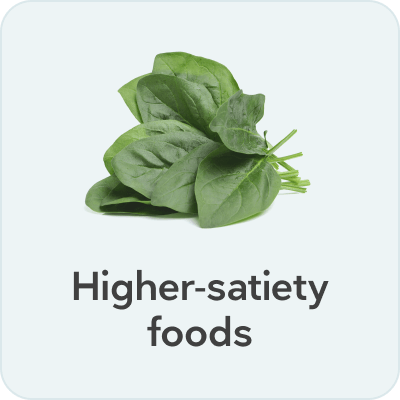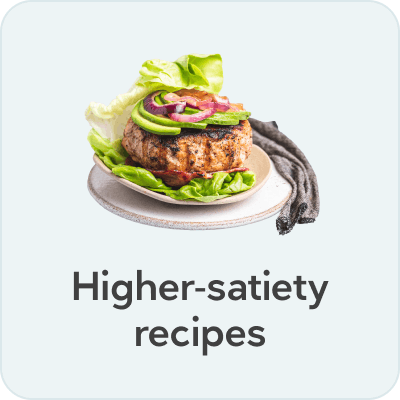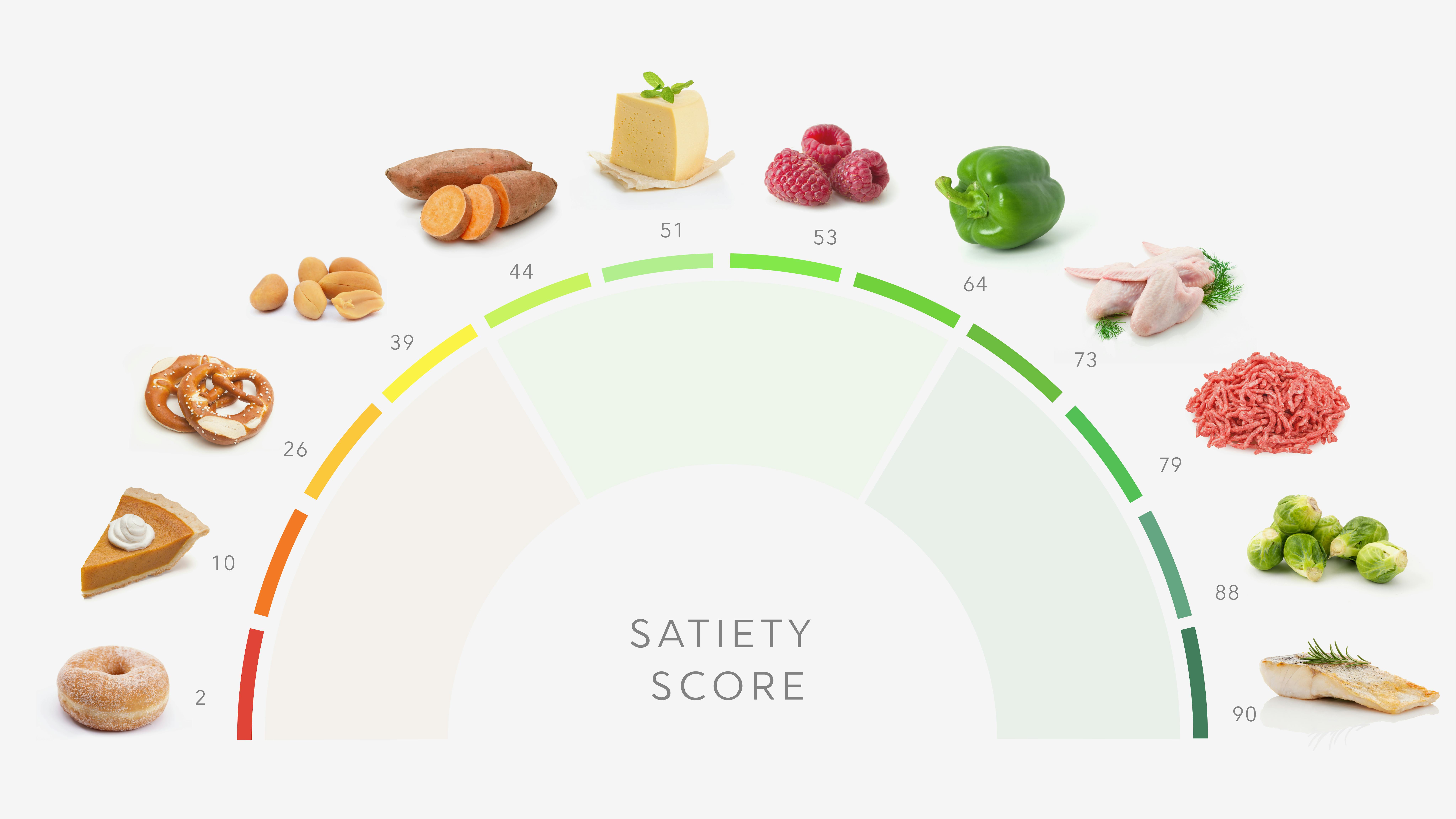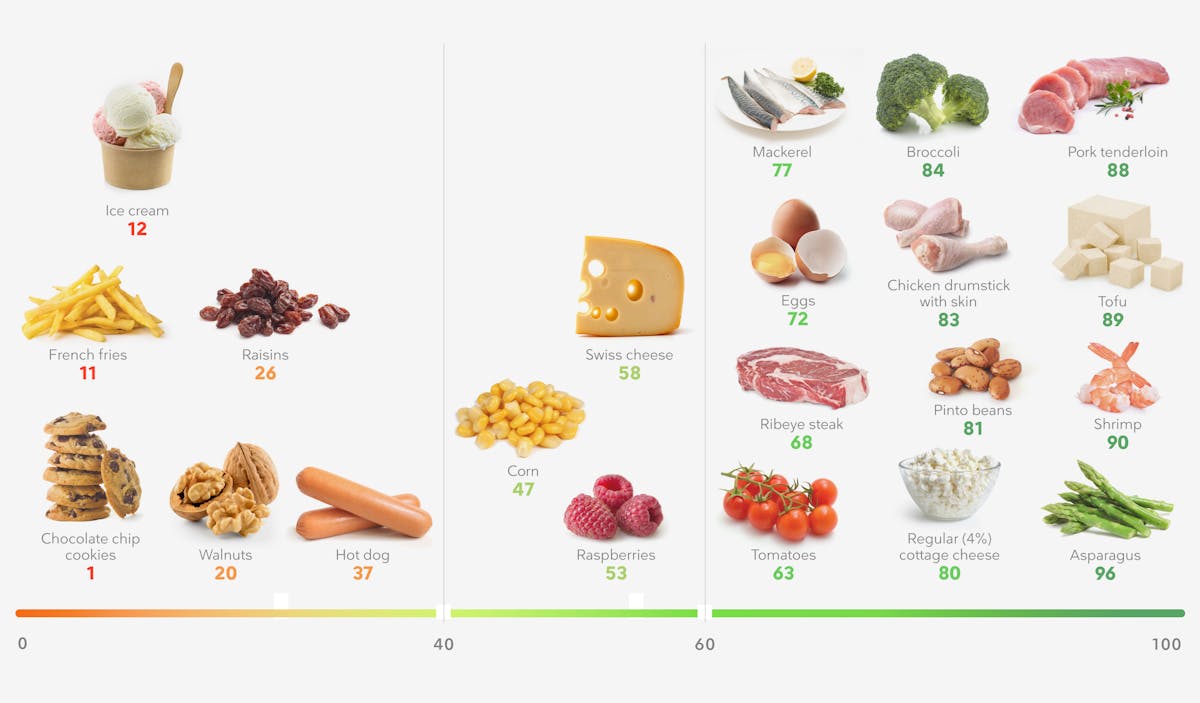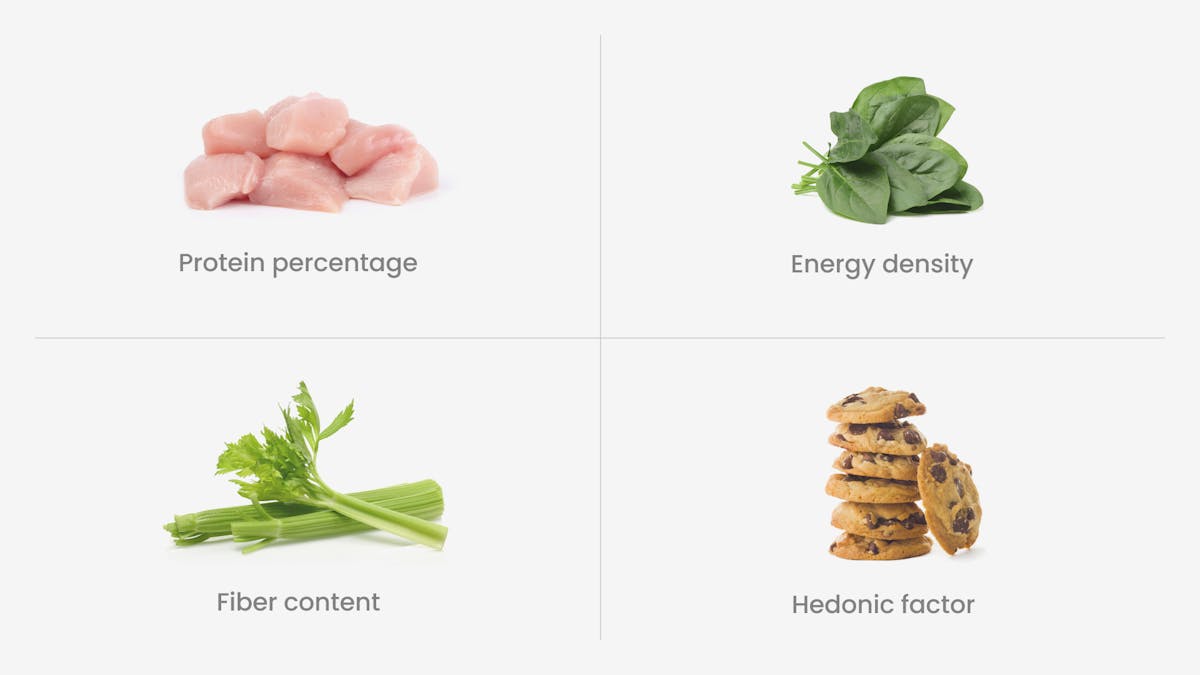Satiety score: curb hunger and reach your goals
Evidence based
We want to make it easier for you to eat the best foods for your health goals. Our satiety score is our way of letting you know how well a dish will keep you feeling comfortably full and satisfied between meals.
You can use our satiety score to help you eat a little less without feeling more hungry. We call this “higher-satiety eating,” and it’s a smart way to fine-tune your food choices.
Keep reading to learn how the score is calculated and how you can use it to help choose the best foods for you.
What is a satiety score?
Satiety essentially means the feeling of being full or no longer hungry. It doesn’t mean feeling overfull or stuffed. Instead, it might help to think of it as the absence of hunger.
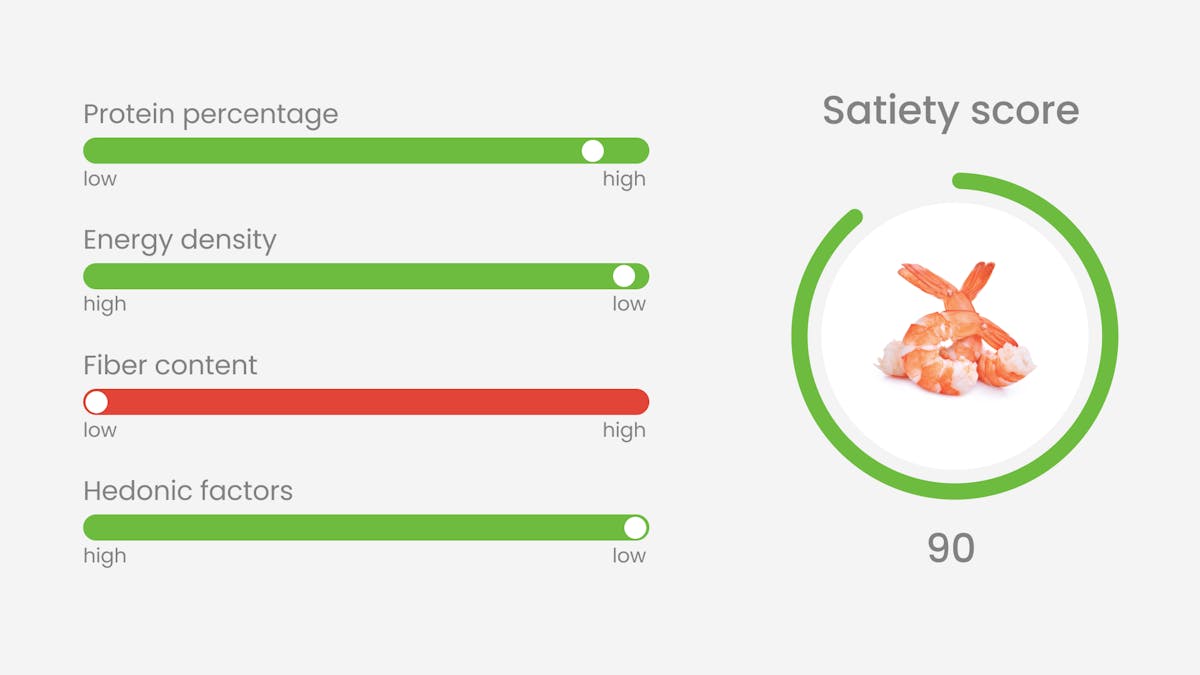

Satiety is a bit of an abstract concept. We make it more concrete by giving foods a satiety score based on how likely they are to contribute to feelings of fullness and satisfaction. The scoring system is intended to help guide your food choices.
Our score ranks foods on a scale of 0 to 100, with higher numbers given to foods that are more likely to offer more satiety. So empty-calorie foods, like cookies, score below 10. And super-satiating foods, like shrimp, score around 90.
But there’s an important feature that makes this concept work even better. When we give food a score, we look at satiety per calorie.
Explore satiety further
Want to delve deeper into the world of satiety? Head over to our sister brand Hava to explore the free version of the satiety calculator.
For satiety scores of any food or meal get started with a free 7-day Hava trial!
Why satiety per calorie?
One easy way to avoid hunger is to eat and eat and eat. Overeating calories can help you feel full. But it can also sabotage your goal of losing weight and improving your health.
That’s why we designed our score around satiety per calorie.
We want to help you choose foods that will keep you as full as possible with fewer calories. This enables you to control hunger while eating the right number of calories for you.
When you focus on satiety per calorie using our score, you prioritize higher protein, nutrient-dense foods that are more likely to provide you with the nutrition you need — while beating back hunger. This should result in a much more sustainable way of eating.
How do we calculate the satiety score?
We incorporated the highest quality nutrition research with clinical experience and created our own scoring system. Our satiety score combines four well-established factors that make a food more satisfying: protein percentage, energy density, fiber content, and a hedonic factor.
We’ve looked at the evidence from studies testing the satiety of different foods and determined how much importance to give to each quality. It’s a complex, tech-enabled algorithm, but fortunately, you don’t have to understand the math to benefit from using the score.
For more on the science of satiety per calorie, please visit our evidence-based guide .
What are the best higher-satiety foods?
Since our formula emphasizes protein percentage and energy density, it should be no surprise that the foods with the highest satiety per calorie are seafood, meat, chicken, eggs, soy, low fat dairy, and fibrous vegetables.
To learn more about the best high-satiety foods.
Putting it into practice
So how do you start eating for higher satiety?
One easy answer is to follow our recipes. You can screen for higher satiety by looking at the satiety score. Anything above 50 is considered “high satiety.”
You can mix and match recipes with different scores to average around 50 for the day. For example, you can start with a main course that has a score of 60 and add a side dish that scores 30.
Or, you can accelerate both the loss of excess weight and the improvement of your metabolic health with even higher-satiety foods, aiming for an average score of 60 to 70.
Or, if you want to start slower without making dramatic changes, at least initially, consider aiming for an average score of around 40.
So, do you think higher-satiety eating is right for you? If so, we encourage you to get started using our recipes, meal plans, and food lists so you can see the benefits of eating higher-satiety foods.
Higher-satiety eating: what & how
Learn how our new higher-satiety eating approach can help you lose weight and improve your metabolic health.
The best high-satiety foods
Which foods can help you feel full and satisfied while you lose weight? Find out in our guide to the best high-satiety foods.
Satiety score: curb hunger and reach your goals – the evidence
This guide is written by Dr. Bret Scher, MD and was last updated on June 19, 2025. It was medically reviewed by Dr. Michael Tamber, MD.
The guide contains scientific references. You can find these in the notes throughout the text, and click the links to read the peer-reviewed scientific papers. When appropriate we include a grading of the strength of the evidence, with a link to our policy on this. Our evidence-based guides are updated at least once per year to reflect and reference the latest science on the topic.
All our evidence-based health guides are written or reviewed by medical doctors who are experts on the topic. To stay unbiased we show no ads, sell no physical products, and take no money from the industry. We’re fully funded by the people, via an optional membership. Most information at Diet Doctor is free forever.
Read more about our policies and work with evidence-based guides, nutritional controversies, our editorial team, and our medical review board.
Should you find any inaccuracy in this guide, please email andreas@dietdoctor.com.
Are you curious about our use of the term “satiety”? It’s a bit of a compromise.
From an academic standpoint, “appetite” is the term that includes the two concepts of “satiation” and “satiety.” Satiation refers to the acute sensation of not wanting to eat anymore at the end of a meal. Satiety refers to the absence of hunger during the time before you want to eat your next meal. However, for simplicity, we use “satiety” as a blended term that encompasses all feelings of fullness and not wanting to eat.
The following study shows micronutrients track well with protein content, suggesting higher protein meals provide higher nutrition.
Frontiers in Nutrition 2019: Higher protein density diets are associated with greater diet quality and micronutrient intake in healthy young adults [nutritional epidemiology study with HR<2, very weak evidence]
And the following studies report reduced caloric intake with higher protein meals:
PLoS One 2011: Testing protein leverage in lean humans: a randomised controlled experimental study [randomized trial; moderate evidence]
American Journal of Clinical Nutrition 2005: A high-protein diet induces sustained reductions in appetite, ad libitum caloric intake, and body weight despite compensatory changes in diurnal plasma leptin and ghrelin concentrations [randomized trial; moderate evidence]
Trends in Food Science and Technology 2015: Optimising foods for satiety [overview article; ungraded]
European Journal of Clinical Nutrition 1995: A Satiety Index of common foods [overview article; ungraded]
We’re excited about providing you with the opportunity to use our satiety score to help improve your health. We’re committed to making sure the score remains as effective and evidence based as possible. We’ll continually update our scoring algorithm based on new evidence and new clinical experiences. So, keep checking back as we continually improve it!




